A special symposium held at CERN in September celebrated the anniversaries of the laboratory’s major discoveries that underlie the modern theory of particles and forces.
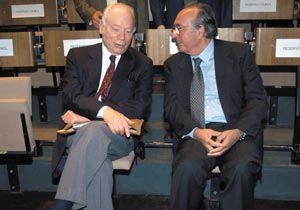
Twenty years ago, in 1983, CERN announced the discovery of the W and Z bosons, a feat that earned the laboratory its first Nobel prize in 1984. Ten years previously, physicists working at CERN had found indirect evidence for the existence of the Z particle in the “neutral currents”. These discoveries together provided convincing evidence for the electroweak theory that unifies the weak force with the electromagnetic force, and that has become a cornerstone of the modern Standard Model of particles and forces.
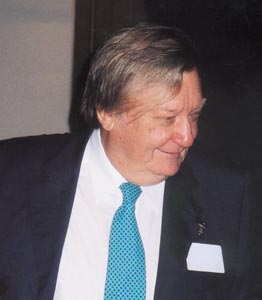
These breakthroughs brought modern physics closer to one of its main goals: to understand nature’s particles and forces in a single theoretical framework. James Clerk Maxwell took the first steps along this path in the 1860s, when he realized that electricity and magnetism were manifestations of the same phenomenon. It would be another hundred years, however, before theorists succeeded with the next stage: unifying Maxwell’s electromagnetism with the weak force in a new electroweak theory.

In 1979, three of the theorists responsible for the electroweak theory, Sheldon Glashow, Abdus Salam and Steven Weinberg, were awarded the Nobel prize. In 1984, Carlo Rubbia and Simon van der Meer from CERN shared the prize for their part in the discovery of the W and Z particles. The results ushered in more than a decade of precision measurements at the Large Electron-Positron collider (LEP), which tested predictions of the Standard Model that could be calculated thanks to the work of theorists Gerard ‘t Hooft and Martinus Veltman, who shared the Nobel prize in 1999.
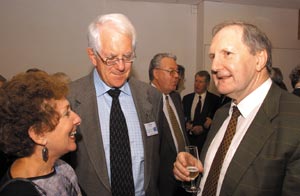
A big celebration
To celebrate the 30th and 20th anniversaries, respectively, of the discoveries of neutral currents and the W and Z bosons, CERN held a special symposium on 16 September. The authors (some 250) of the papers that announced the discoveries were invited to attend, together with others who had played valuable roles in the development of the Standard Model, including Glashow, Weinberg and Veltman. Weinberg gave the opening talk – a masterful discourse on “The making of the Standard Model”. He began in the 1950s, which he described as a time of frustration after the triumph of quantum electrodynamics, before moving on to an account of his own contributions to electroweak theory during the second half of the 1960s. He also mentioned the work of many other physicists, some of whom were in the audience.
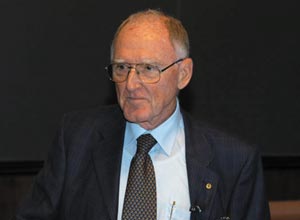
An important step towards confirming electroweak unification came in 1973, when the late André Lagarrigue and colleagues working with the Gargamelle bubble chamber at CERN observed neutral currents – the neutral manifestation of the weak force that had been predicted by electroweak theory but never previously observed. Later in the same decade, Rubbia proposed turning the laboratory’s most powerful particle accelerator into a particle collider, an idea that received the support of the then directors-general, John Adams and Léon Van Hove. By colliding counter-rotating proton and antiproton beams head on, enough energy would be concentrated to produce W and Z particles. This was made possible, in particular, through van der Meer’s invention of “stochastic cooling” to produce sufficiently dense antiproton beams.
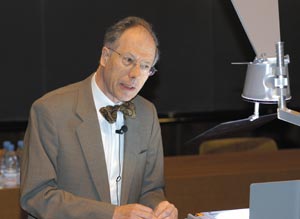
In the second presentation at the symposium, Giorgio Brianti described CERN’s various contributions to accelerators and beams, beginning in 1961 with van der Meer’s invention of the magnetic horn to provide a more intense neutrino beam by focusing the charged particles (mostly pions) that decay to provide the neutrinos. A decade later the Intersecting Storage Rings became the world’s first proton-proton collider, and also the test-bed where stochastic cooling was invented.
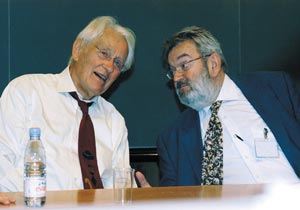
Dieter Haidt then took up the story of the experiments, with his presentation on the discovery of neutral currents. In the early 1970s Haidt, now at DESY, was a member of the Gargamelle collaboration. He described the background to the search for neutral currents, and the difficulties encountered in convincing everyone that they had indeed been observed in Gargamelle. Ultimately the discovery led to the high-precision neutrino experiments at CERN, and allowed the prediction of the mass of the W boson from electroweak theory – which in turn led to the proton-antiproton project.
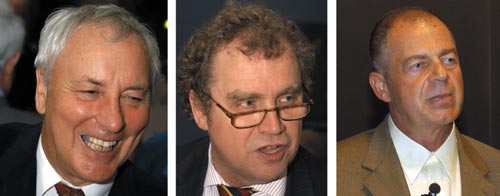
By 1981 the search for the W and Z particles was on. The observation of W particles by the UA1 and UA2 experiments was announced at CERN on 20 and 21 January 1983. The first observation of Z particles by UA1 followed soon after, with the announcement on 27 May (CERN Courier May 2003 p26). Pierre Darriulat, who was spokesperson of UA2 in 1978-1985, recalled the background to the decision to go ahead with the programme of converting the Super Proton Synchrotron (SPS) to a proton-antiproton collider, and cast his own personal illumination on the nature of the competition between the two experiments, UA1 and UA2.

With the discovery of the W and Z particles, electroweak theory became truly established. The challenge was now for a different kind of collider – LEP – to provide a precision test-bed for the theory. In the final presentation of the morning, Peter Zerwas from DESY looked back on the era of LEP, 1989-2000, and its many tests of the Standard Model of particle physics – testing not only electroweak theory but also quantum chromodynamics, the theory of the strong interaction.
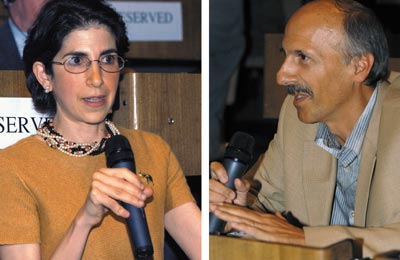
A challenging future
In addition to reflecting on past findings, speakers at the symposium also looked to the future of CERN, in particular the Large Hadron Collider (LHC), which is due to start up in 2007. By colliding particles at extremely high energies, the LHC should shed light on such questions as: why do elementary particles have mass? What is the nature of the dark matter in the universe? Why did matter triumph over antimatter in the first moments of the universe, making our existence possible? And what was the state of matter a few microseconds after the Big Bang? These are the topics that John Ellis from CERN covered in the first presentation after lunch.
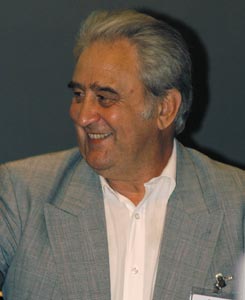
This was followed by a session on the challenges of the LHC. Lyn Evans, director of the LHC Project, presented the challenges of constructing and operating the collider; Jos Engelen, currently director of NIKHEF and soon to be chief scientific officer at CERN, described the challenge of building the detectors for the LHC; and Paul Messina, of Caltech, talked of the challenges to be met once the LHC and the experiments are running, when vast amounts of data will need to be collected and analysed.
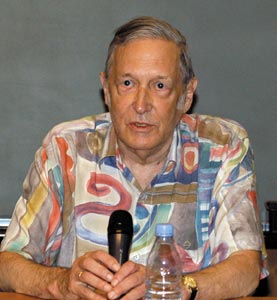
The discovery of the W and Z particles owed much to the development of detector techniques, in particular by Georges Charpak at CERN, who was rewarded with the Nobel prize in 1992. In his presentation, Charpak recalled his early days at CERN, when he was invited to come to the laboratory for six months only to stay eventually for many years, leading many developments in particle detectors. He also spoke of the opportunities for spreading enthusiasm for physics to the younger generations.
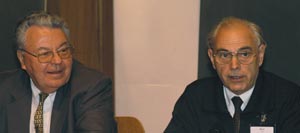
In the final presentation CERN’s director-general Luciano Maiani gave his personal view of the future of the organization, and its importance for particle physics in general. This was followed by a panel discussion on the future of particle physics, chaired by Rubbia – a former director-general as well as Nobel laureate. Panel members included Robert Aymar, who will be director-general of CERN from 1 January 2004, Lev Okun, of ITEP, Donald Perkins of Oxford University, and van der Meer and Veltman, as well as symposium speakers Charpak, Darriulat, Maiani and Weinberg. Among the many points discussed, one of the most important, as Rubbia said in his summary, is that “we should not underestimate the surprise capacity of the LHC”.
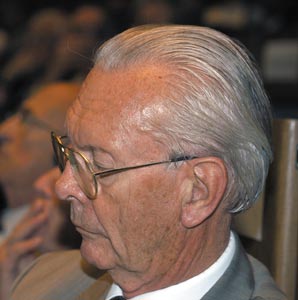
The symposium was organized by Roger Cashmore and Jean-Pierre Revol. Many of those attending had participated in the discoveries being celebrated – and many of the younger members of the audience will hope to participate in future discoveries at CERN, in particular in the coming years with the LHC.
Further reading
See www.cern.ch/cerndiscoveries.
The proceedings of the symposium will be published as:
1973: neutral currents, 1983: W± and Z0 bosons – the anniversary of CERN’s discoveries and a look into the future The European Physical Journal C 34 1.








